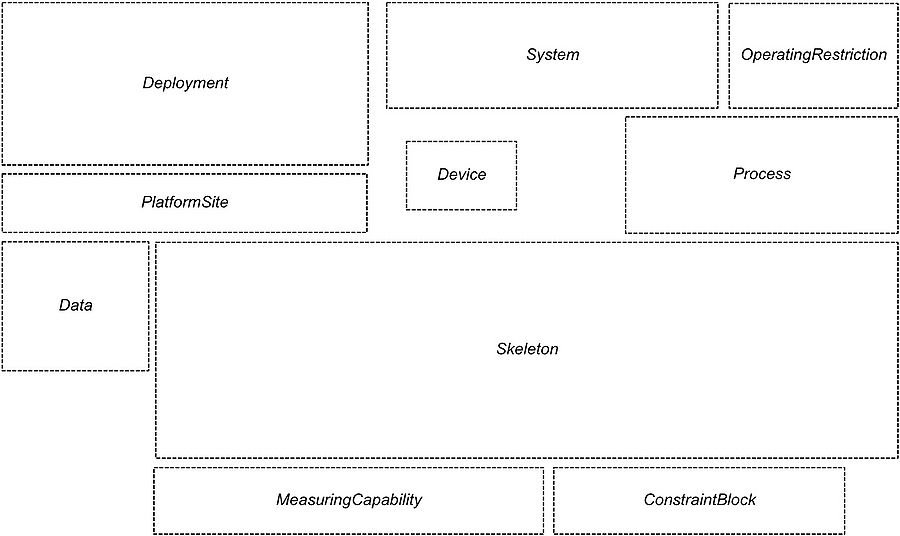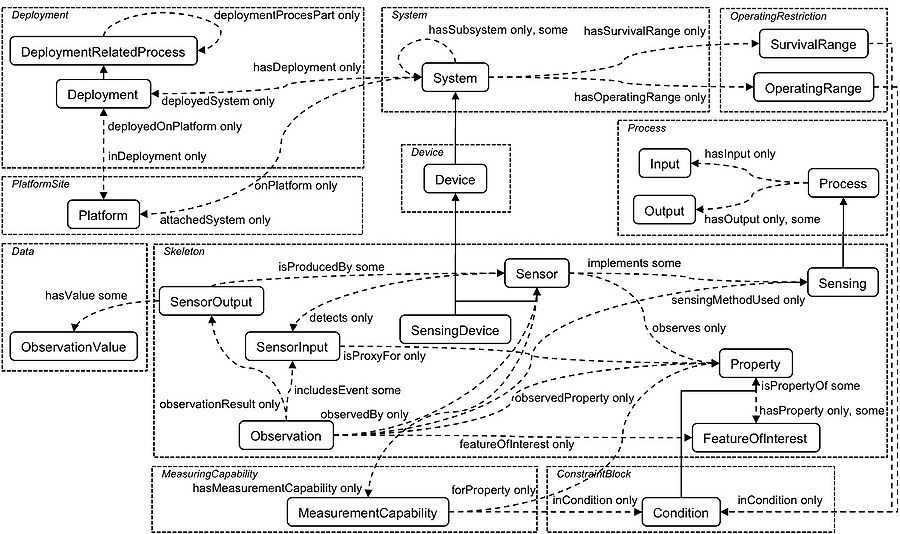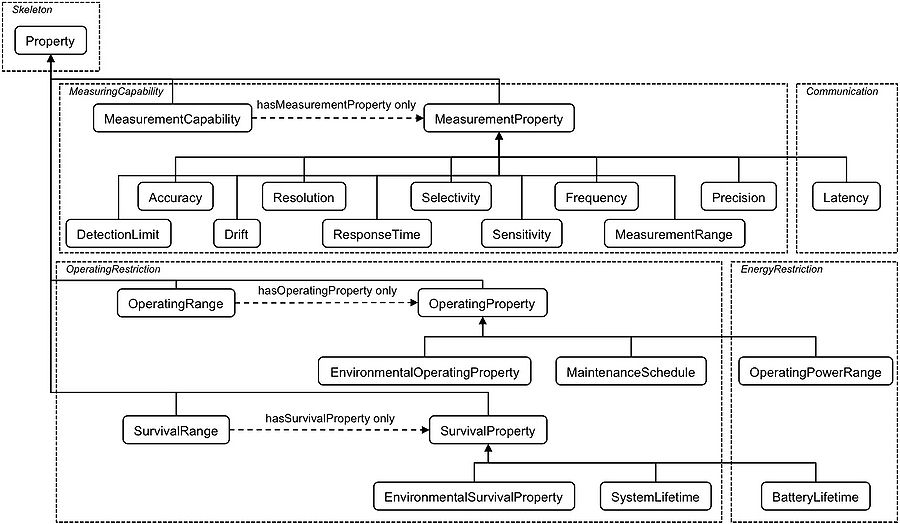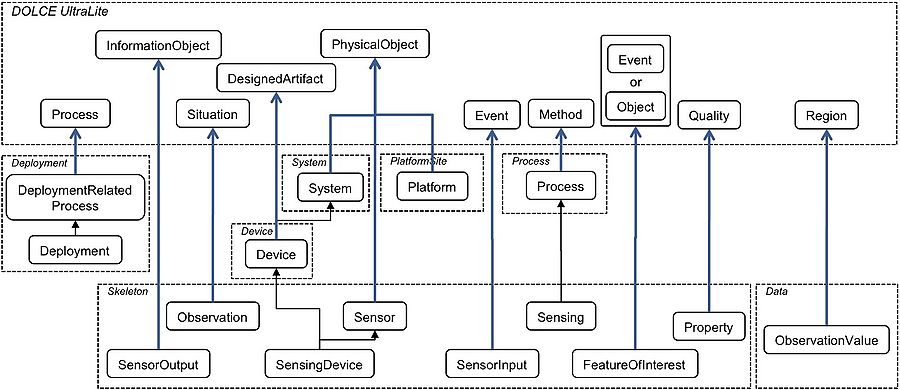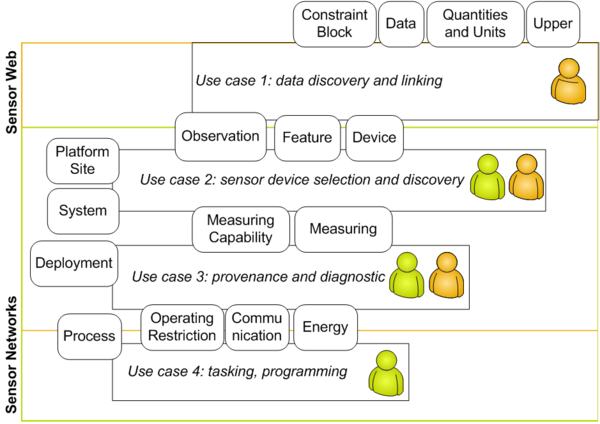Warning:
This wiki has been archived and is now read-only.
Report Ontology Structure
Ontology structure
The Semantic Sensor Network ontology revolves around the central Stimulus-Sensor-Observation pattern (see the description of the pattern). Several conceptual modules build on the pattern to cover key sensor concepts. These modules can be seen in Figure 5.1 and the relationships between them appear in Figure 5.2, which contains an overview of the main classes and properties inside the ontology modules.
Figure 5.1 - Overview of the Semantic Sensor Network ontology modules
The ontology can be used for a focus on any (or a combination) of a number of perspectives:
- A sensor perspective, with a focus on what senses, how it senses, and what is sensed;
- A data or observation perspective, with a focus on observations and related metadata;
- A system perspective, with a focus on systems of sensors; or,
- A feature and property perspective, with a focus on features, properties of them, and what can sense those properties.
The modules as described here allow further refining or grouping of these views on sensors and sensing. The description of sensors may be detailed or abstract. The ontology does not include a hierarchy of sensor types; these definitions are left for domain experts, and for example could be a simple hierarchy or a more complex set of definitions based on the workings of the sensors.
Figure 5.2 - Overview of the Semantic Sensor Network ontology classes and properties
The modules contain the classes and properties that can be used to represent particular aspects of a sensor or its observations: for example, sensors, observations, features of interest, the process of sensing (i.e: how a sensor operates and observes), how sensors are deployed or attached to platforms, the measuring capabilities of sensors, as well as their environmental, and survival properties of sensors in particular environments (a detailed enumeration of these properties can be found in Figure 5.3).
Figure 5.3 - Enumeration of the measurement, environmental and survival properties
The main classes of the Semantic Sensor Network ontology have been aligned with classes in the DOLCE Ultra Lite (DUL) foundational ontology to facilitate reuse and interoperability. Figure 5.4 shows in blue arrows the subclass properties used to align these two ontologies. More information about this alignment can be found throughout this report and also in a dedicated section.
Figure 5.4 - Alignment of the Semantic Sensor Network ontology to DOLCE Ultra Lite
Finally, Figure 5.5 shows how the ontology modules defined above support the use cases described in the previous section:
- Users developing Semantic Sensor Web applications, represented in orange in the figure, should be more specifically interested in the modules connected to the Data Discovery and Linking and Provenance and Diagnosis uses cases,
- Users developing Semantic Sensor Web applications, represented in green in the figure, also need the modules connected to the Device Discovery and Selection and Device Operation Tasking and Programming uses cases.
Figure 5.5 - Use cases and ontology modules
